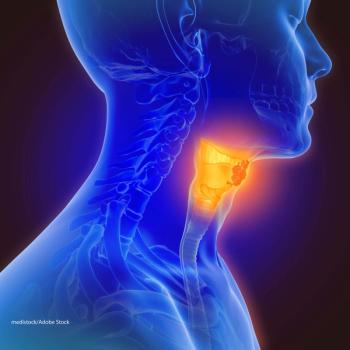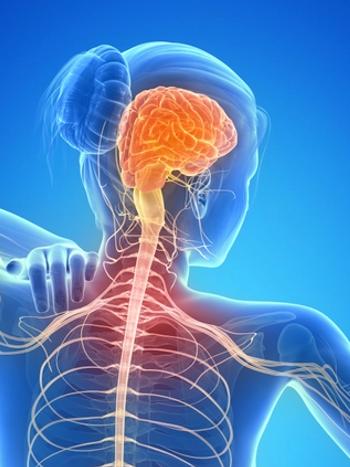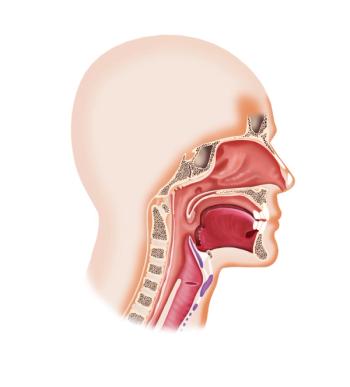
Oncology NEWS International
- Oncology NEWS International Vol 14 No 6
- Volume 14
- Issue 6
Nonselective NSAIDs Lower Oral Cancer Risk in Smokers
Anaheim, California-A large case-controlled Norwegian health service cohort study found that regular NSAID (Anaheim, California-A large case-controlled Norwegian health service cohort study found that regular NSAID (nonsteroidal anti-inflammatory drug) use of 5 years or more cut oral cancer risk in half among heavy smokers, but also doubled their risk of cardiovascular (CV) death. Notably, while the study investigated nonselective NSAIDs, it did not assess COX-2 inhibitors.
Anaheim, California-A large case-controlled Norwegian health service cohort study found that regular NSAID (nonsteroidal anti-inflammatory drug) use of 5 years or more cut oral cancer risk in half among heavy smokers, but also doubled their risk of cardiovascular (CV) death. Notably, while the study investigated nonselective NSAIDs, it did not assess COX-2 inhibitors.
Lead investigator Jon Sudb, MD, PhD, DDS, from the Norwegian Radium Hospital, Oslo, Norway, reported the findings in a news conference at the 96th Annual Meeting of the American Association for Cancer Research (AACR abstract 4377). Given the aggressiveness of some forms of oral cancer, with mortality of about 70%, the apparent cost-benefit of NSAID therapy still favors its use for certain patients at extremely high risk, Dr. Sudb told ONI.
The study cohort was derived from the Norwegian Cancer Registry, a database of more than 123,000 people; the researchers focused on those accrued between 1975 and 1995.
Heavy Smokers
By cross-linking the Norwegian Cancer Registry database with a population-based national health survey by the Norwegian Institute of Public Health, the investigators could assess actual occurrence of carcinomas in this group. Among 9,241 persons with a smoking history of 15 or more pack-years, 454 (about 5%) were diagnosed with squamous cell carcinoma of the oral cavity (279 males, average age at diagnosis 63 years).
Focusing on heavy smokers "was very selective and perhaps not representative of the cohort, but we chose this approach to enhance the frequency of oral cancer, which is not common," Dr. Sudb commented. Interestingly, up to 80% used hand-rolled (filterless) cigarettes, which "have been shown to confer twice the risk of acquiring oral cancer as compared to filtered cigarettes [Blot WJ et al: CancerRes 48:3282-3287, 1988]," he added.
The researchers carefully matched patients one-to-one by age and sex with 454 controls, for a total study population of 908. They considered use of six NSAIDs (aspirin, ibuprofen, naproxene, indomethacin, piroxicam, and ketoprofen), as well as acetaminophen.
Long-term NSAID use was seen in 263 persons, 41% of controls (n = 186) and 20% of cases (n = 77). While "long-term" was defined as daily use for 6 months or longer, most long-term users had taken NSAIDs for 5 years or more, Dr. Sudb said. The remaining 645 study participants were not long-term NSAID users.
A 48% reduction in oral cancer risk was seen in those using NSAIDs daily for at least 5 years, and a 70% reduction in those using NSAIDs for 15 years or more. "Long-term oral NSAID use reduced risk of oral cancer by about 50%, as did smoking cessation," Dr. Sudb told ONI, noting that 216 persons quit smoking before oral cancer development or last follow-up, and moderate (and not significant) additional effects were seen when smoking cessation and NSAID use were combined in a multivariate analysis.
"The problem was, the 50% reduction in oral cancer incidence did not translate into increased overall survival," he said. "We started mining the database and, to our surprise, found that long-term use-daily for at least 6 months but in this cohort for several years or more-was associated with double the risk of cardiovascular death" (hazard ratio = 2.06).
Among the 263 users of NSAIDs, 42 died of cardiovascular death (about 16%). Among 562 never-users of NSAIDs, 41 died of CV death (about 7%). Yet all were also at risk for CV disease, because they were heavy smokers, Dr. Sudb said. For example, even in the cohort of 263 NSAID users, "about 20 [8%] would have died of cardiovascular disease regardless of whether they used NSAIDs."
Balancing Risk
"An additional 8% to 10% died because of NSAID use," he said. "I think it’s fair in a setting where we do not have any effective treatment [such as patients with aneuploid leukoplakias], to accept the risk of CV death from NSAID use balancing out the potential 48% reduction in oral cancer risk mortality."
Dr. Sudb said the study was too small to assess the impact of individual NSAIDs on oral cancer risk or cardiovascular mortality (eg, only 14 people in the study took aspirin). News conference moderator Raymond DuBois, MD, PhD, director, Vanderbilt-Ingram Cancer Center, and professor of medicine, Vanderbilt University School of Medicine, concurred, adding "some NSAIDs may be safer than others. . . . In very large population studies, one might be able to look at that more carefully."
Also, Dr. Sudb said, "These were extremely heavy NSAID users-many of them perhaps as long as 20 years, and all more than 5 years. That is quite different from using NSAIDs in a randomized, controlled trial monitoring patients every 3 months for possible development of cardiovascular disease. Perhaps these numbers, although true, apply only to the setting of extreme risk of cardiovascular disease."
Commenting on the need to balance risk when considering NSAIDs as protection against oral cancer, Dr. Sudb said, "If you think you need to use them, use them, but you need to be careful. . . . With patients at high risk of oral cancer, I know they will take the chance, because I’ve asked them."
Dr. Sudb and his coinvestigators in Norway are planning a phase III trial of the selective COX-2 inhibitor celecoxib (Celebrex) in patients with aneuploid leukoplakias. "These patients tend to accept the moderate risk associated with celecoxib use, because it is more than offset by the potential benefits for their serious condition, for which there is no other treatment," he said.
The study was supported by a grant from the National Cancer Institute. US investigators participating in the study were J. Jack Lee, MD, and Scott M. Lipp-man, MD, of M.D. Anderson Cancer Center; and Andrew J. Dannenberg, MD, of Weill Medical College of Cornell University, New York.
Dr. Sudb and his coinvestigators are now in the process of assessing the entire cohort of 123,000 persons to establish the risk of cardiovascular disease from NSAID use in its entire spectrum, from nonsmokers to heavy tobacco users.
Articles in this issue
over 20 years ago
Herceptin Trials Usher in New Era in Adjuvant Therapyover 20 years ago
First-Line Avastin Ups Survival in Advanced NSCLCover 20 years ago
Heavy Meat Consumption Linked to Pancreatic Cancerover 20 years ago
Study Finds Cognitive Impairment Before Chemotherapyover 30 years ago
Surgeons Discuss Patient Selection Criteria for Breast ConservationNewsletter
Stay up to date on recent advances in the multidisciplinary approach to cancer.




















































































